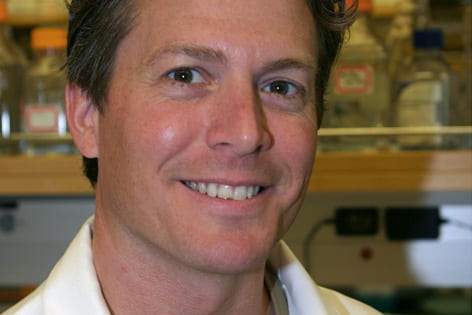UCI behind world’s first embryonic stem cell study in humans
A therapy developed at UC Irvine that made paralyzed rats walk again will become the world’s first embryonic stem cell treatment tested in humans.

A therapy developed at UC Irvine that made paralyzed rats walk again will become the world’s first embryonic stem cell treatment tested in humans.
The U.S. Food & Drug Administration has approved the therapy, based on work by a research team led by Hans Keirstead, co-director of the UCI Sue & Bill Gross Stem Cell Research Center, for a clinical trial in patients with acute spinal cord injury.
Geron Corp. of Menlo Park, Calif., will conduct the clinical trial.
“This trial was approved only after rigorous safety testing and consultation of countless experts in the field,” Keirstead said. “Any benefit to the patient, even an incremental one, would be a resounding victory.”
The therapy contains human embryonic stem cells destined to become spinal cord cells called oligodendrocytes. These are the building blocks of myelin, the biological insulation for nerve fibers that is critical for maintaining electrical conduction in the central nervous system. When myelin is stripped away, through injury or disease, paralysis can occur.
In laboratory tests, Keirstead and his colleague, Dr. Gabriel Nistor, developed a technique for prompting human embryonic stem cells to develop into oligodendrocyte cells.
Injected into rats with spinal cord injuries, the precursor cells turned into oligodendrocytes and migrated to the injured area of the spinal cord. As the cells wrapped around damaged neurons, new myelin tissue formed, allowing electrical conduction to resume and the rats to walk again.
This success, published in the Journal of Neuroscience in 2005, was the subject of dozens of media stories, including a “60 Minutes” segment.
According to Geron, patients eligible for the phase-one trial must have a certain type of spinal cord damage and be willing to receive injections 7-14 days after injury. Geron has selected up to seven U.S. medical centers that may participate in the study.
“This is the first step along a road that we’re soon going to see turn into a racetrack,” said Keirstead, also affiliated with the Reeve-Irvine Research Center for spinal cord injuries.
UCI has a robust stem cell research program that has received more than $52 million from the California Institute for Regenerative Medicine. UCI’s scientists are pioneers in regeneration, large-scale production of specialized cells with very high purity, and methods for treating damaged tissues
UCI recently broke ground for a four-story building dedicated to stem cell research. When finished in 2010, the building will house the stem cell center, dozens of laboratory-based and clinical researchers, a stem cell techniques course, a master’s program in biotechnology with an emphasis on stem cell research, and programs and activities for patients and public education.